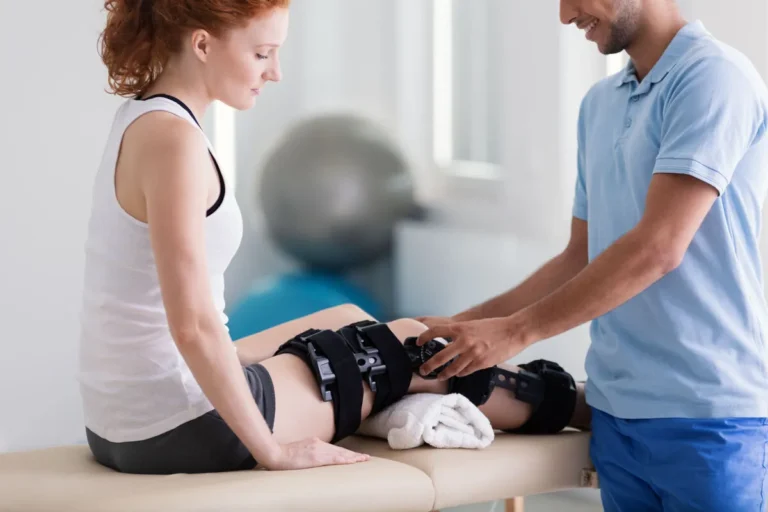How Do I Stop My Neck From Hurting When I Sleep?
One of the most effective ways to relieve chronic neck pain during sleep is through proper alignment through utilization of proper pillows. The alignment of your head and neck plays a crucial role in preventing discomfort and ensuring a restful night’s sleep. It’s essential to select a pillow that maintains your neck’s natural curve, reducing strain and helping you wake up pain-free.
Schedule your appointment today at Bull City PT’s Durham – Charlotte – Brier Creek offices.
Importance Of Proper Pillow Positioning
Proper pillow positioning is vital for maintaining a neutral position of the spine while sleeping. Whether you sleep on your side or back, ensure your pillow is neither too high nor too low. A pillow that supports the natural curve of your neck can significantly reduce strain, thus minimizing pain. Incorrect pillow positioning can lead to added stress on the muscles and joints, causing or exacerbating neck pain.
Tips For Choosing The Right Pillow Height
When selecting a pillow, it’s important to consider its height. Side sleepers generally benefit from a higher pillow to bridge the distance between the shoulder and neck, that is softer. Back sleepers, on the other hand, need to find a middle ground where the support is firm, but is not so high that it pushes their neck too far forward. Remember, the goal is to keep your neck in a comfortable and supported position throughout the night.
Adjusting Sleeping Posture To Prevent Neck Pain
Besides choosing the right pillow, adjusting your sleeping posture plays a critical role in relieving neck pain and preventing neck pain. If you sleep on your back, using a pillow beneath your knees can help maintain the natural curve in your spine. Side sleepers can try placing a pillow between their knees to align the hips and reduce twisting in the spine. Avoid sleeping on your stomach, as it can cause your neck to twist at extreme angles, leading to increased discomfort.
How Should I Lay To Fix Neck Pain?
Finding the best sleeping positions can significantly aid in alleviating neck and shoulder pain. Choosing the right way to rest can prevent further discomfort and promote a restful night’s sleep. The key is to minimize strain on the neck while maximizing comfort.
Optimal Sleeping Positions For Minimizing Neck Strain
For many individuals, the sleep position of lying on the back is ideal as it evenly distributes weight and prevents any unnecessary twisting or turning of the neck. Using a pillow that supports the natural curvature of the cervical spine is crucial in this position. A cervical pillow is often recommended to maintain alignment of the spine and head.
Benefits Of Side Sleeping Vs Back Sleeping
Side sleeping, particularly on the left side, can also be beneficial for ensuring a good night’s sleep. It helps reduce the risk of acid reflux. When sleeping on the side, care should be taken to use a pillow that is high enough to keep the neck supported, aligning the head with the spine.
Specific Adjustments For Neck Pain On The Left Or Right Side
If you have neck pain on a specific side, such as the left or right, it’s advisable to sleep on the opposite side. This helps relieve pressure on the pained side. Alternatively, lying flat on your back may help distribute the pressure more evenly, which can aid in reducing side-specific discomfort and reduce neck pain.
How To Decompress Your Neck While Sleeping
Techniques To Naturally Decompress Your Neck At Night
Decompressing your neck while sleeping can greatly alleviate discomfort and prevent waking up with a sore neck. A simple yet effective technique is adjusting your sleeping position. Sleeping on your back can maintain your spine’s natural curve, reducing undue pressure on the neck. Elevating your legs slightly by placing a pillow under your knees can further help in redistributing weight evenly, fostering a neutral spine alignment.
Another method involves the use of a cervical pillow, designed to support the natural curve of your neck. These pillows cradle the neck and head, helping keep the neck aligned with the spine. Selecting a pillow with the right height is crucial; it should be high enough to support the neck but not so high that it causes the neck to bend unnaturally.
Impact Of Mattress Firmness On Neck Health
Your mattress plays a significant role in neck health. A mattress that’s too soft can lead to sagging, causing the neck to twist and turn during sleep, contributing to discomfort. On the other hand, a mattress that’s too firm might not conform to the natural curves of the body, leading to pressure points. Therefore, choosing a medium-firm mattress that offers adequate support while allowing some give is ideal for keeping both the neck and spine aligned.
Using A Cervical Pillow For Support
Cervical pillows are specially designed to maintain proper alignment beneath your neck as you sleep. These pillows come in various shapes and materials, such as contoured foam or water-based options which allow for height adjustment. These features cater to individual preferences and specific neck issues. Regular use can help decompress the neck by promoting proper alignment and alleviating muscle strain, resulting in improved sleep quality and reduced neck pain.
How To Release Tight Neck Muscles
Experiencing a stiff neck and tight neck muscles can be a source of significant discomfort and may hinder daily activities. There are several effective techniques to alleviate this tension and enhance mobility.
Exercises And Stretches To Relieve Tension
Incorporating regular exercises and stretches can be highly beneficial in reducing tension in the neck. Gentle stretching exercises like the chin tuck, where you pull your chin down toward your chest can help relieve neck pain and improve posture. Another effective stretch is the side head tilt, where you gently tilt your head towards one shoulder and hold for 30-45 seconds before repeating on the other side. Performing these exercises daily can significantly enhance flexibility and reduce stiffness in the neck muscles. A physical therapist can recommend targeted exercises or physical therapy for neck pain for a personalized recovery plan.
The Role Of Heat And Cold Therapy In Muscle Relaxation
Applying heat can promote blood flow and help relax tense muscles, offering immediate relief from tight neck muscles. Consider using a warm towel or heating pad for up to twenty minutes, a few times a day. In contrast, cold therapy is effective in reducing inflammation and numbing sharp pain. Applying an ice pack wrapped in a cloth for ten to fifteen minutes can alleviate acute pain and promote healing.
Incorporating Regular Neck Exercises Into Your Routine
To sustain long-term relief, incorporating regular neck strengthening exercises into your routine is crucial. Isometric exercises, such as pressing your palm firmly against your forehead and holding the position without moving your head, can bolster the neck muscles, providing support and reducing the likelihood of pain recurrence. Complement these exercises with good posture and ergonomic adjustments in your daily life. Additionally, considering pain relief options, including over-the-counter and prescription medications, is important. Consult with healthcare professionals to determine the most effective pain-relieving medication and understand the associated risks.
Ease the tension in your neck with care and expertise at Bull City PT. Our professional therapists are dedicated to delivering personalized treatments and the latest techniques for lasting relief. Schedule your consultation today at our Brier Creek location and take control of your health and well-being.





